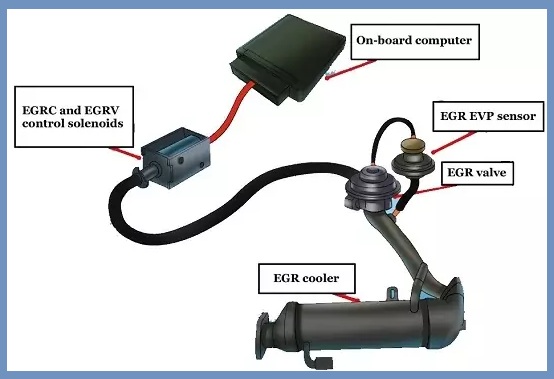The EGR position sensor detects the movement and position of the EGR spool. The EGR pressure sensor measures the flow of exhaust gas through the EGR channel.
EGR stands for Exhaust gas Recirculation.

The EGR system is the most important part of the vehicle that controls NOx emissions. The EGR system consists of an EGR valve, an EGR cooler, and an EGR sensor. The main function of the EGR sensor is to control the flow of exhaust gas through the passage and the position of the EGR valve plug. This article mainly discusses various aspects of the EGR sensor.
Using the EGR sensor, the ECU (Engine Control Unit) monitors the EGR pressure and uses this information to adjust the pressure. If there is a change during pressure monitoring, the sensor will report a new pressure value for verification.
Table of Contents
Working Concept of EGR Pressure Sensor
The EGR pressure sensor uses the exhaust gas pressure from the EGR system to monitor the pressure applied to the EGR system at the desired time. This helps software designers and manufacturers of engine control systems understand how to adjust the vehicle’s EGR system to accommodate different pressure conditions. At engine speeds and loads higher than, the EGR pressure sensor measures higher pressure. However, the pressure sensor monitors lower exhaust pressure at lower engine speeds and loads.
The electronic control unit obtains information from the EGR sensor to increase or decrease the pressure inside the EGR system to achieve efficient EGR system operation. This process is accomplished by gradually opening and closing the EGR valve until the control module is completely satisfied with the pressure in the EGR system. If the EGR system is producing very high or very low emissions, the sensors will help the engine control unit identify the problem and prevent damage to the system.
Signs/Symptoms of Bad EGR Sensor
- Poor engine performance
- Higher fuel consumption
- Fuel odor
- Higher emissions
How do I replace the EGR pressure sensor?
Proper maintenance and replacement of the EGR valve are very important for the efficient functioning of the EGR system.
Follow these steps to replace the valve.
- First, remove the two rubber or composite rubber hoses from the sensor.
- Remove the metal wire from the exhaust manifold or EGR pipe.
- Then disconnect the sensor from the electronic connector
- If necessary, replace the tube and install a new sensor.
- Some sensors may use brackets or fasteners to attach the sensor. This is as easy as removing the mounting hardware and replacing it with a new sensor.
Causes of Faulty EGR valve
A failed EGR valve can cause problems with the flow and operation of the EGR system and can cause performance problems such as reduced horsepower, reduced acceleration, and reduced fuel efficiency. It may also increase vehicle emissions.
You can drive the vehicle with a failed EGR bulb, but the vehicle will be rough, idle, and sway, and the check engine light will come on. As you drive down the street, you’ll also hear popping sounds.
